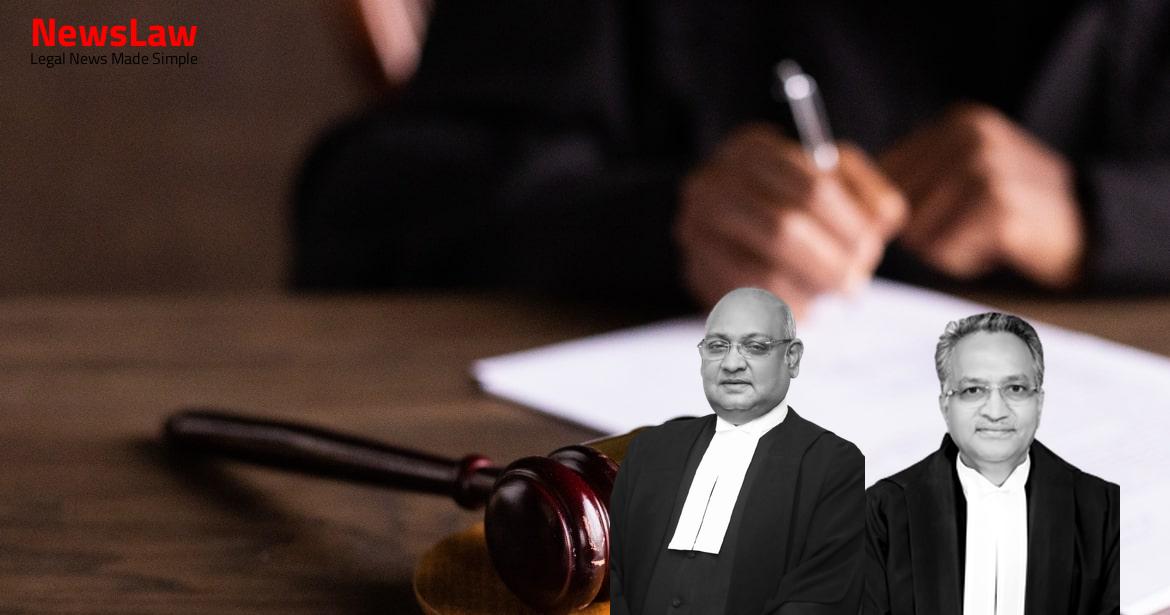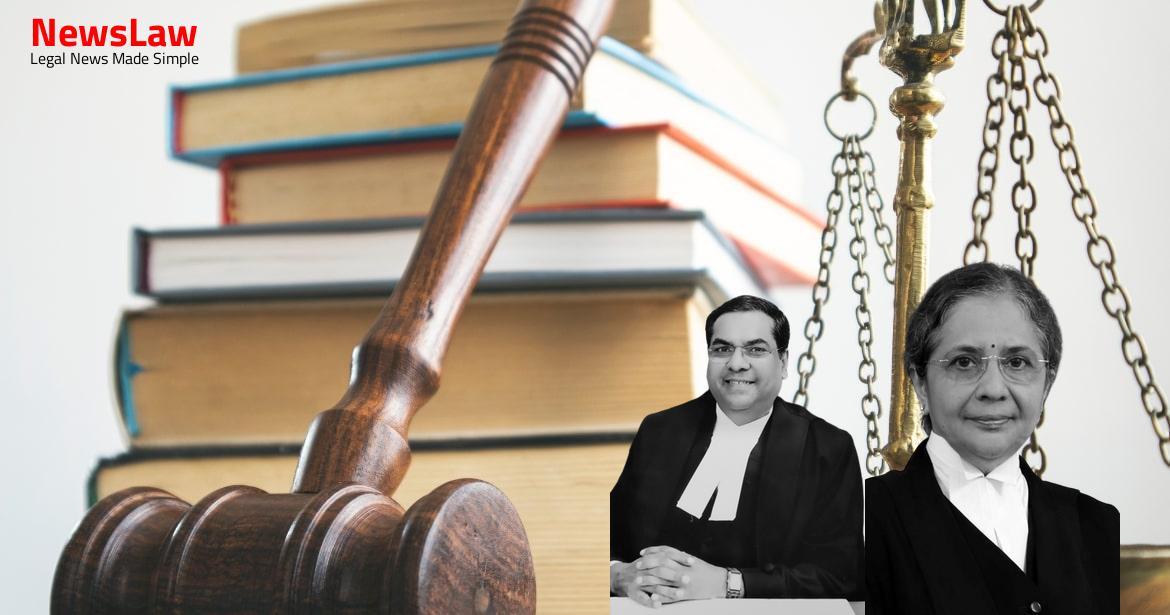In a significant decision by the Supreme Court of India, the conviction in the Mohar Pal assault case has been upheld, ensuring justice for the victim. The case involved multiple accused individuals, with the Court carefully analyzing the evidence to reach its verdict. This judgment establishes the importance of evidence in delivering justice and reinforces the credibility of eyewitness testimonies provided by witnesses like Bishan Singh (PW-1) and Baljit Singh (PW-2). The decision sets a precedent for cases involving multiple accused and conflicting accounts of events.
Facts
- Rajender (Accused No.3) and Billu (Accused No.5) were acquitted by the Trial Court and their acquittal became final as it was not challenged by the State or the complainant.
- Roop Chand (Accused No.4) and Dev Kumar (Accused No.6) were also acquitted by the High Court with their acquittal becoming final.
- Rohtas (Accused No.1), Surender Singh (Accused No.2), Roop Chand (Accused No.4), and Dev Kumar (Accused No.6) were convicted by the Trial Court under Section 302 read with Section 34 IPC and sentenced to life imprisonment and fine.
- The appeal against the conviction of Rohtas and Surender Singh was based on the argument that the evidence was misread by the lower Courts.
- The High Court affirmed the guilt of Rohtas and Surender Singh, stating that the evidence clearly established their involvement in causing the death of Mohar Pal.
- The High Court also acquitted Roop Chand and Dev Kumar after reappreciating the evidence on record.
- The incident involving the death of Mohar Pal occurred at Government Hospital, Palwal
- Two different versions of the incident were presented by the prosecution and the accused
- Accused claimed Mohar Pal was already injured in a previous altercation near Anaj Mandi
- Prosecution alleged Mohar Pal was attacked by the accused at the hospital gate
- Witness statements provided conflicting accounts of the events leading to Mohar Pal’s death
- The accused denied their involvement in the offense based on an alternative plea
- Investigation was conducted by ASI Gian Singh (PW-6) based on the FIR filed by Bishan Singh (PW-1)
- Charge sheet was filed against six accused persons under sections 148, 302, and 149 IPC
Also Read: Balancing Justice: Case Summary of C.P. No. 16/2017
Arguments
- The State argues that despite the acquittal of co-accused, the appellants cannot be granted relief due to the strong evidence against them.
- The investigation and evidence presented in court have been deemed sufficient by both the Trial Court and the High Court.
- The accused initially claimed that the injuries were sustained in a fight between two groups prior to the incident, but later changed their plea stating the incident did not occur near the Government hospital.
- The State’s counsel supports the guilt of appellants Rohtas and Surender Singh based on named witnesses and clinching evidence.
- Appellants raise concerns about deficiencies in the investigation including the lack of a seizure list of deceased’s clothes, failure to ascertain the deceased’s blood group, and non-presentation of the alleged knife recovered by the prosecution.
- They argue that the prosecution has failed to establish the link between the seized articles and the blood of the deceased.
- The principle of falsus in uno, falsus in omnibus has no general applicability in India.
- The Court is not debarred from separating the truth from the falsehood and accepting a part of the evidence.
- The acquittal of other accused persons does not automatically lead to the acquittal of the present appellants, as there is sufficient evidence against them.
- The evidence of Bishan Singh (PW-1) and Baljit Singh (PW-2) as eye-witnesses is considered reliable and cannot be undermined, particularly against the present appellants.
- The benefit given to other accused by the High Court does not necessitate giving a similar benefit to the appellants.
Also Read: Judgment by Supreme Court of India in M/s. Bhilwara Processors Ltd. vs. Department of Central Excise
Analysis
- The evidence of Bishan Singh (PW-1) and Baljit Singh (PW-2) cannot be disregarded entirely.
- The delay in lodging the FIR was satisfactorily explained, and the FIR was promptly registered.
- The medical evidence supported the prosecution’s case against the accused appellants.
- The trial court and the high court found the testimonies of the eyewitnesses to be natural and trustworthy.
- The presence of related witnesses does not diminish the reliability of their evidence if it is found to be truthful.
- The accused failed to provide substantial evidence to support their claims of innocence.
- The recovery of the weapon used during the crime further implicated the accused appellants.
- The discrepancies in the FIR and the Investigation Report were not substantial enough to discredit the prosecution’s case.
- The courts differentiated between acquitted and convicted accused based on the quality of evidence against each.
- The appellate courts upheld the trial court’s decision, finding no manifest error of law or procedure in the judgment.
- The maxim falsus in uno falsus in omnibus has not received general acceptance and is not a mandatory rule of evidence.
- Courts have the duty to separate valid evidence from invalid evidence in a case.
- Material discrepancies, which are abnormal and unexpected, can impact the credibility of a party’s case.
- Normal discrepancies, due to errors in observation or memory, do not necessarily undermine the credibility of a witness.
- Courts must sift through evidence carefully to determine the truth and convict based on sufficient evidence.
- Minor discrepancies in statements of witnesses are expected and cannot discredit the core of a prosecution’s case.
- Delay in lodging an FIR may result in embellishment or exaggeration, but it should not automatically render the case invalid.
- Minor discrepancies in witness statements of trivial nature cannot be a ground to reject the evidence entirely.
- Variations in behavior or reactions of witnesses are natural and should not be used to discredit their testimonies.
- The principle of falsus in uno falsus in omnibus, where falsity in one thing implies falsity in everything, does not apply in India.
- The lack of evidence regarding previous enmity and the prosecution’s failure to produce evidence cannot be a basis to reverse the guilty verdict against the appellants for assaulting Mohar Pal near the Government Hospital in Palwal at 8:30 p.m. on April 25, 1998.
- The 8:30 p.m. incident was a retaliation to a fight between two groups that occurred at 6:30 p.m. and was fueled by their existing enmity.
- This sequence of events establishes a connection between the earlier altercation and the assault, supporting the conviction of the appellants.
Also Read: Landmark Judgment: Consolidation of FIRs and Bail Granted in ‘Grand Venice’ Project Case
Decision
- The bail bonds of the appellants have been cancelled.
- The appeal has been dismissed.
- The appellants are directed to surrender within four weeks.
- If the appellants fail to surrender, necessary action will be taken by the local police station in accordance with the law.
- No interference is warranted in this appeal.
Case Title: ROHTAS Vs. THE STATE OF HARYANA STATE OF HARYANA
Case Number: Crl.A. No.-000764-000764 / 2009



